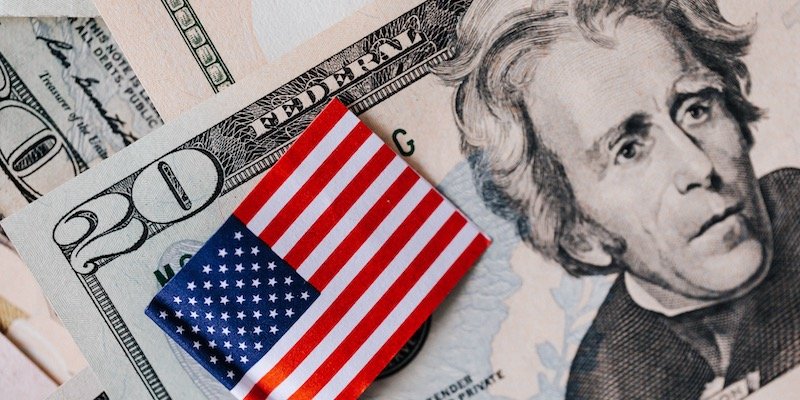What Is Cash Flow, How Does It Function, and How Can It Be Analyzed
Feb 17, 2024 By Triston Martin
The term cash flow describes a business's net inflow and outflow of currency. Inflows are defined as cash received, while outflows are designated as cash spent. Whether or not a company can generate positive cash flows, particularly increase its long-term free cash flow, is a major factor in determining whether or not it can create value for its shareholders (FCF). Free cash flow (FCF) is the cash flow remaining after a company deducts the cost of capital expenditures from its normal operating cash flow.
Recognizing the Flow of Money

The inflow and outflow of cash are known as cash flow. Revenues are a company's earnings, while expenses are the costs incurred in running the business. They may also sell products on credit and wait to be paid until later, as well as earn money from interest, investments, royalties, and licensing agreements.
One of the primary goals of financial reporting is to enable an evaluation of cash flows, including their source, destination, quantity, time, and uncertainty. With it, you can evaluate a company's liquidity, adaptability, and financial success.
Factors To Take Into Account
As was discussed above, a company's financial statements consist of three main sections:
- Profit and loss statement, which shows how well a company did financially within a given period
- The cash flow statement, which is like a company's checkbook, balances the other two. It's a log of all the money that came in and went out of the business during a specified time frame. To what extent income statement revenues have been collected is revealed.
Various Sources of Funds

Operating Cash Flows
Cash flow from operations, also known as operating cash flow, is the term used to describe the monetary flows caused by manufacturing and selling goods in the normal course of business.
The Chief Financial Officer reports on whether or not the company has the sufficient cash flow to cover its current obligations. For a business to survive over the long term, it needs to generate more money from operations than it spends.
Cash from sales is subtracted from cash outlays for operational expenditures to arrive at operating cash flow.
Investing-Related Cash Flows
Investing cash flow, also known as cash flow from investing (CFI), details the amount of money earned or lost due to a company's investments during a given time frame. Acquisition of speculative assets, purchasing securities, and selling securities and assets are all examples of investing activities.
A negative cash flow from investing activities is not necessarily a cause for alarm if it results from necessary investments in the company's long-term viability, such as those in research and development (R&D).
Funding Cash Flows
Financing cash flow, also known as cash flows from financing (CFF), depicts the net cash inflows and outflows that serve to finance and capitalize on a business. Debt issuance, stock sales, and dividend distributions are all examples of financing acts. Investors can learn about a company's financial health and management of its capital structure through the cash it generates from financing activities. 1
Profit vs. Cash Flow
Cash flow is different from profit, despite popular belief. These two terms are often interchanged due to their similarity. In and out are two sides of the same coin regarding a company's cash flow. On the other hand, the profit of a business is a direct indicator of its financial health. This is the sum that remains after a company has met its financial commitments.
Why Is It Crucial To Understand Free Cash Flow?
After a company deducts its operating costs and capital expenditures, the remaining cash is known as free cash flow. It is the sum of money left over after obligatory spending has been met. FCF can be utilized in any acceptable manner by a company.
Investors may gain valuable insight into a business's financials by learning how to calculate and evaluate free cash flow (FCF), which aids the company in its cash management. Free cash flow (FCF) is a crucial metric since it reveals a company's efficiency.
Conclusion
Cash flow is the flow of money into and out of business. If the cash flow is positive, more money is coming in, whereas if it's negative, more money is going out. The latter is a good sign since it might indicate that your funds are being put toward expansion.
It's crucial to monitor your finances whenever you're in charge of any organization or household.t state than where you live. There are costs associated with opening a 529 plan, keeping it active, and managing it.
-
 Investment Jan 26, 2024
Investment Jan 26, 2024New RMD Rules for 2023
As per the new RMD rules 2023, here are some major changes. If you wish to learn more, go through the guide
-
 Mortgages Feb 13, 2024
Mortgages Feb 13, 2024What Is the VA Funding Fee? A Guide for Veterans?
The VA Funding Fee is a one-time fee that veterans pay when they take out a home loan using their VA benefits. The cost of the fee varies depending on eligibility status and loan type; for first-time use loans, it typically ranges from 1.25% - 3.3%.
-
 Investment Oct 29, 2023
Investment Oct 29, 2023Types of Insurance Policies and Coverage You Need
Even if we can't stop the unexpected from occurring, there are occasions when we can safeguard ourselves and our families from the most severe repercussions it will have on our finances.
-
 Know-how Oct 11, 2023
Know-how Oct 11, 2023Maximize Your Investment Potential: 5 Must-Know Facts Before Markets Ope
Get ready for the trading day with these essential investing tips. Learn what to consider before markets open to make informed decisions.
